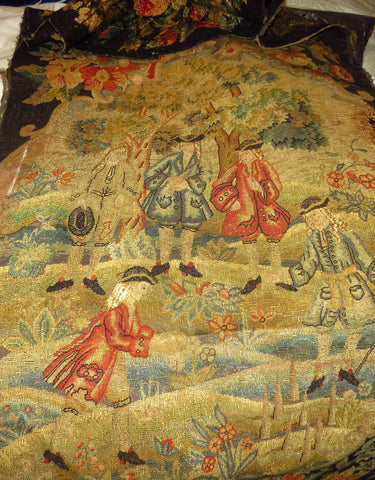You are always a student, never a master
My knowledge of Petit Point is not built on googling the terms from different sources on-line, especially those that do not relate to needlework at all. My knowledge is based on researching, reading old needlework, embroidery books, visiting the museums, observing the items, studying the stitches, collecting antique and vintage textile.
Holding a degree in Linguistics, proper terminology is essential for me. I think it is important to learn to talk clearly when it comes to any terminology, needlework is not an exception. Let us say simpler: different terminology means different things.
You might ask me WHY?
Undoubtedly, proper terminology helps to fully understand specific topics.
It helps people to communicate more efficiently.
It increases clarity of the topic of conversation.
It stops from bringing false statements about a subject of discussion.
For a long time, since the 16th century, Petit Point has been identified as a separate type of Needlework. Many historic needlework pieces are done in Petit Point.

I do not know any other types of needlework that has so many controversial opinions than Petit Point.
People are giving different definitions to Petit Point, its stitches, ground fabric and use.
The art of Petit Point is sometimes wrongly referred to as Needlepoint. Someone calls it Embroidery, someone says that Petit Point is Needlepoint, someone simply refer Petit Point to small stitches of needlepoint. Another opinion is that Petit Point could be done only on silk gauze and it is another wrong statement; or that Petit Point is used only for stitching miniature pillows, carpets, etc. for a doll house. Petit Point is not a name of a stitch either, as many are confused.
So, what is Petit Point?
Petit Point is one of the types of counted needlework

Needlework term covers counted thread (needlepoint, petit point, cross stitch, black work, etc.), and surface embroidery techniques (for instance, stumpwork, ribbon work, bead work, crewelwork, needle painting, etc.).
Then what is the difference between Needlepoint and Petit Point?, you will ask me.
Let me tell you it is not a type of canvas that determines a type of needlework.
It is the stitches and techniques that tell us what type of work it is.
The difference between Needlepoint and Petit Point lays in stitches that are used in these 2 related to each other but different types of needlework.
Needlepoint is the common name for the technique of covering a canvas ground with counted or decorative stitches. Therefore, there is a counted needlepoint and needlepoint on canvas.
The counted technique is also used in Petit Point. However, historically correct to say that Petit Point is done with Tent Continental stitch, a stitch that belongs to the family of Tent stitches (Basketweave, also called Tent Diagonal; Tent Continental; and Half Cross Stitch), stitches that are used in Needlepoint as well.
All confusion arises when it comes to the family of Tent stitches now.
The family of Tent stitches are:
Basketweave stitch (also referred to as Tent Diagonal)
Tent Continental stitch
Half Cross Stitch
All 3 stitches look the same on the surface ground,



but due to the different techniques they are executed, the backside of a stitched piece with a different stitch from the Family of Tent stitches does look different.



Now let us go back to terminology. Why is the group of these stitches called “Tent”?
It derives its name from the old word “tenture”, or “tenter”, the frame on which the material was stretched.
Why is Basketweave stitch called so?
Basketweave stitch is called so, because due to its technique and a stitch executed diagonally, the backside of a stitched piece with basketweave stitch resembles a woven basket.
Why is a Tent stitch for Petit Point given Continental name? Based on entomology of an old French word continent (adj.) the word “continental” referring to a needlework stitch means “holding together, continuous” due to the technique of a Tent Continental stitch when a stitch is taken across the intersection of each warp and weft thread on canvas (that is different from executing a half cross stitch). In this way of laying the stitches the closest rows of small stitches thus formed conceal completely material and produce short slanted stitches on the surface and long slanted stitches on the back side.
Happy petit pointing!
Natalia

